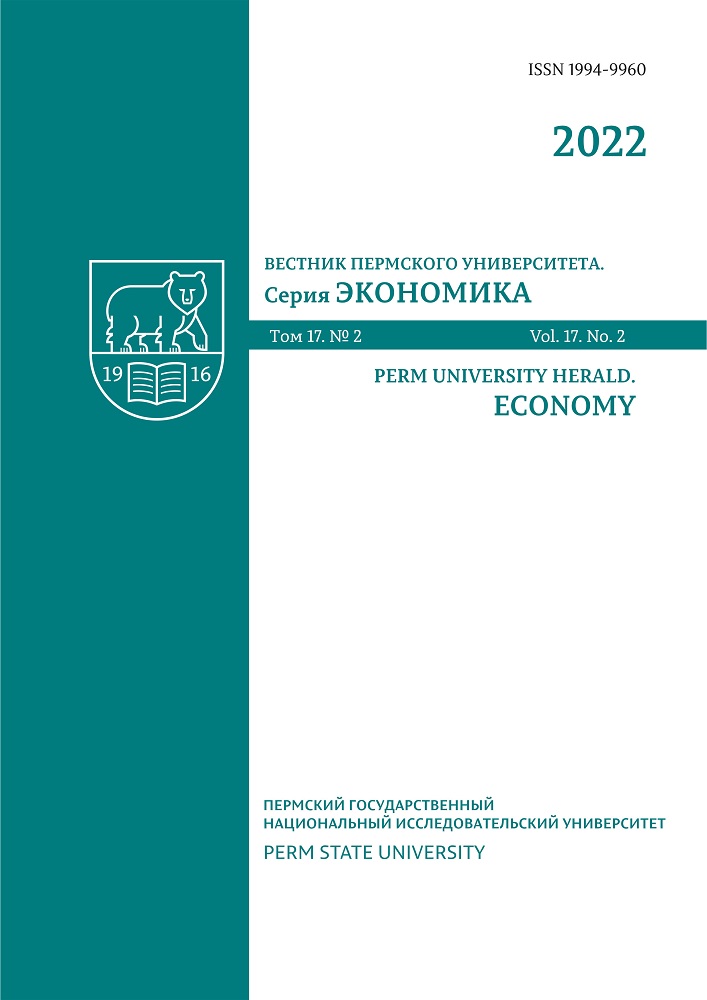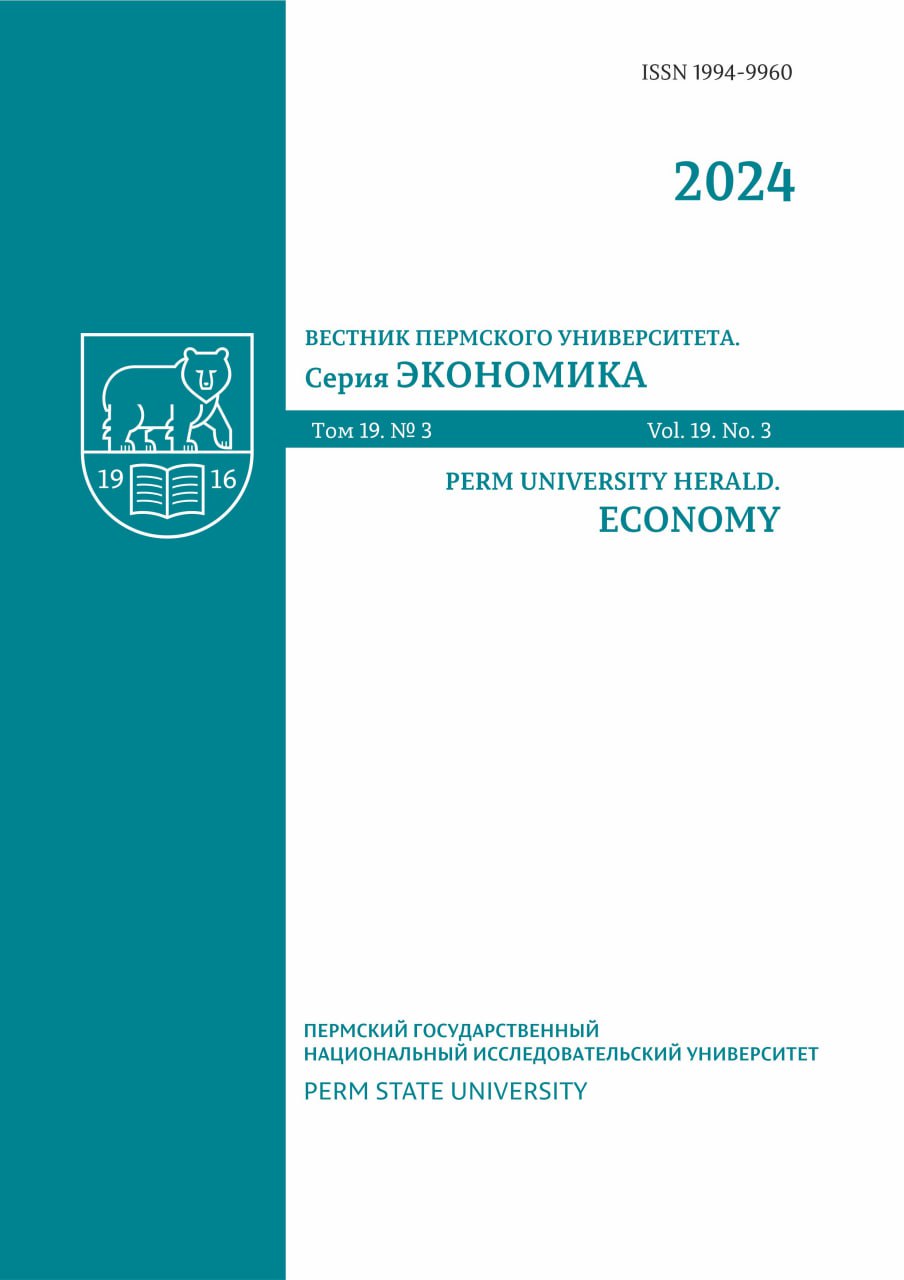Vol. 17 No. 2 (2022)

The first section of the issue “Economic-Mathematical Modeling” includes an article where an author applies panel data based econometric methods and examines the impact of innovations on the GRP growth. The author shows that promotion of innovative activities could affect economy growth both in the country and in its regions.
A section “Regional and Municipal Economy” starts with a research where the authors are among the pioneers in a comprehensive analysis of interaction between two territorial economic systems – a region and a cluster. The paper extensively examines theoretical sources to develop a conceptual system aimed to solve the problem of cluster’s binary nature and describes a graphic model which could be applied to reduce detrimental effects from the cluster strategy. The second article of the section looks at the social economic background of territorial public self-government (TPSG) and its impact on the region. The authors prove the statement that TPSG is a municipal-based economic unit. They examine the case of Perm Krai and describe correlations between TPSG development indicators and some indicators of social economic development. They conclude that there is a need for the analysis of specific cases with territorial peculiarities. The third study is aimed to apply sustainability window methodology to receive the latest data about the social ecological and economic sustainability of a northern region. The author comes to conclusion that the territory in question is being developed and recommends including the methodology in the system of managerial solutions applied by the respective authorities.
An author of the first article in the section “Current Issues of Accounting, Auditing and Economic Analysis” carries on a multi-faceted analysis of such a nuanced accounting object as deferred taxes (discussion starts here in Issue 4/2021). The author reveals the key issues, proposes some alternatives of more efficient registration and interpretations of the tax effects, specifies the nature of the deferred taxes, theoretically formalizes the concepts of temporary and timing differences and two methodologies for depreciation of deferred tax assets, explains a methodological mechanism of initiation and reverse of allowances, and considers international practices in this area as well. The issue finishes with a study devoted to the depreciation policy. The authors classify the approaches to its development, refer to the acting international and Russian standards, reveal a contemporary priority approach when depreciation deductions are properly distributed along the time axis, and accurately determine prime costs. The study examines aerospace industry and shows non-compliance of the majority of industrial enterprises with this approach in their depreciation strategy. The authors give their own methodology designed to estimate disposal value as a solution for one of the most serious problems in developing depreciation strategy.









